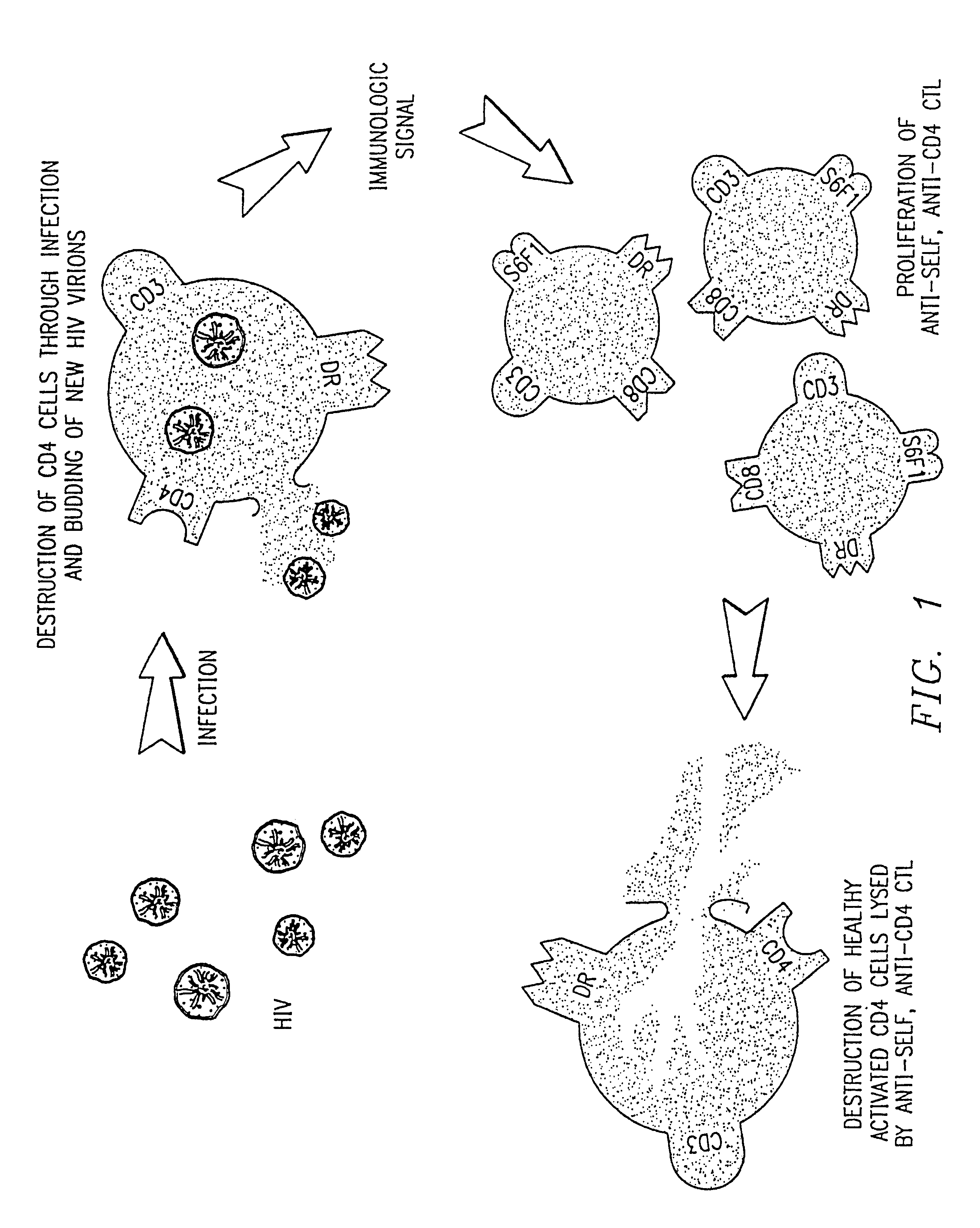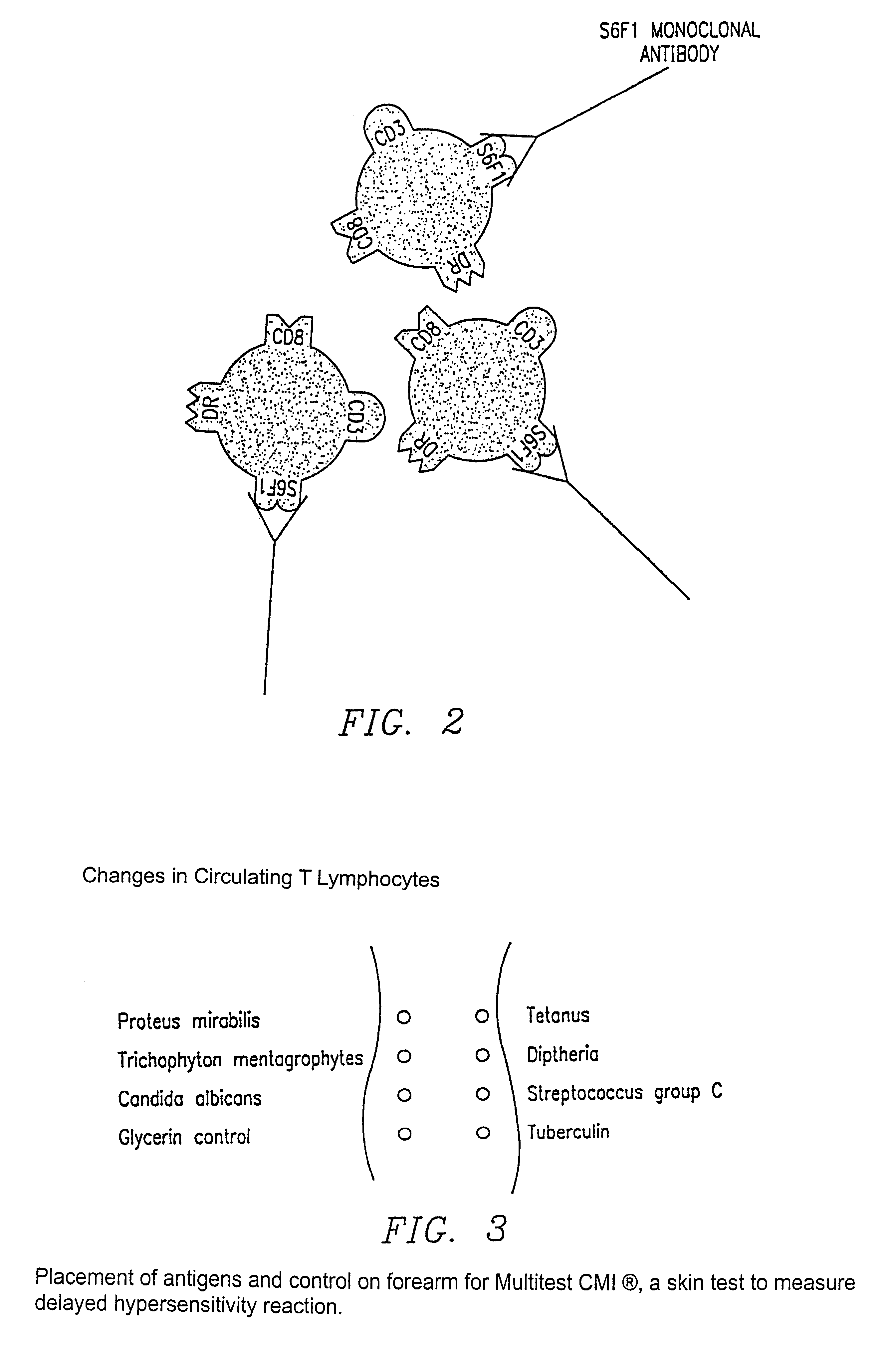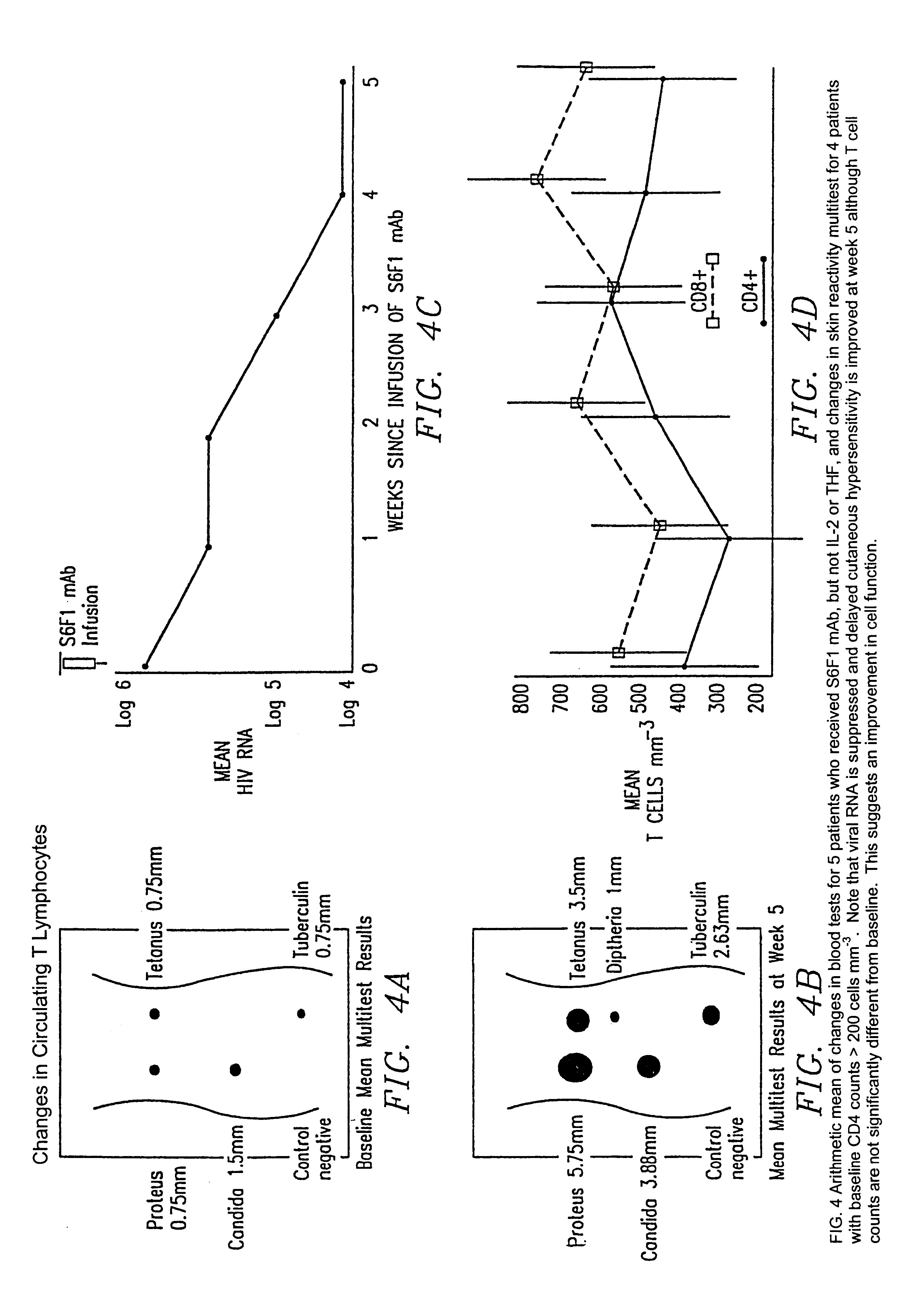Method increasing the delayed-type hypersensitivity response by infusing LFA-1-specific antibodies
a technology of delayed-type hypersensitivity and lfa-1, which is applied in the direction of antibody medical ingredients, peptides/protein ingredients, peptides, etc., can solve the problems of ctl or suicide cells, the inability to account for the profound and indiscriminate loss of these cells, and the inability to infect the number of cells, so as to increase the cd4 count, inhibit il-2 production, and improve the effect of t help
- Summary
- Abstract
- Description
- Claims
- Application Information
AI Technical Summary
Benefits of technology
Problems solved by technology
Method used
Image
Examples
example 1
A patient, infected with the HIV virus for about ten years, had been receiving treatment by injection of his own T cells to achieve a biphasic elevation of the CD4 / CD8 ratio. The patient had been responding to such injections for a period of about fifteen months of treatment. At that time, the patient had also been on ddI for approximately two years. However, given the advanced stage of the patients' disease, both of these treatments were no longer providing beneficial results. In fact, HIV could be cultured from his blood cells even when the blood was diluted out to about one part per 3,120. Even at such dilution, the p24 antigenemia, which is a measure of HIV activity, was quite high at about 300 pg / ml.
The patient was then treated in accordance with the method of the present invention. In particular, the patient was given about 68 mg of S6F1 antibodies over a period of 14 days. The 68 mg corresponded to 1 mg / kg of the patient's body weight. A few days after completing the treatmen...
example 2
Patient MW-64 had a CD4+ count of 290 and a CD4 / CD8 ration of 0.13 (NGI labs); prior to his first infusion of 14 milligrams of TS1 / 18 monoclonal antibodies. His CD4+ cell count rose to 460 and his CD4 / CD8 ration rose to 0.20 just four weeks after the first infusion. It is crucial to note that MW-64 was stable on antiretrovirals for six months preceding the infusion of TS1 / 18 monoclonal antibodies and did not introduce any new therapies during this interval. There was also some suggestion of a return of some cell mediated immunity in MW-64 since the first infusion, with increased reactivity to tetanus toxoid and candida on skin testing. MW-64 has been infected with HIV for twelve years and his CD4+ cell counts have been about 250 for the past two years.
This treatment regimen establishes the efficacy of anti-LFA-1.beta. MAbs.
example 3
Patient SG-67 had a CD4+ count of 330 and a CD4 / CD8 ratio of 0.28 prior to his first infusion with TS1 / 18 monoclonal antibodies. His CD4+ cell count rose to 530 and his CD4 / CD8 ratio rose to 0.56 just four weeks after the first infusion. It is crucial to note that SG-67 was stable on antiretrovirals for four months preceding the infusion of the TS1 / 18 monoclonal antibodies and no new therapies were introduced during this interval. There is also some suggestion of a return of some cell mediated immunity in SG-67 since the first infusion, with increased reactivity to tetanus toxoid on skin testing. SG-67 has been infected with HIV for eleven years and his CD4+ cell count has hovered around 300 for the past three-and-one-half years.
This treatment regimen further establishes the efficacy of anti-LFA-1.beta. MAbs.
PUM
| Property | Measurement | Unit |
|---|---|---|
| time | aaaaa | aaaaa |
| weight | aaaaa | aaaaa |
| adhesion | aaaaa | aaaaa |
Abstract
Description
Claims
Application Information
 Login to View More
Login to View More - R&D
- Intellectual Property
- Life Sciences
- Materials
- Tech Scout
- Unparalleled Data Quality
- Higher Quality Content
- 60% Fewer Hallucinations
Browse by: Latest US Patents, China's latest patents, Technical Efficacy Thesaurus, Application Domain, Technology Topic, Popular Technical Reports.
© 2025 PatSnap. All rights reserved.Legal|Privacy policy|Modern Slavery Act Transparency Statement|Sitemap|About US| Contact US: help@patsnap.com



